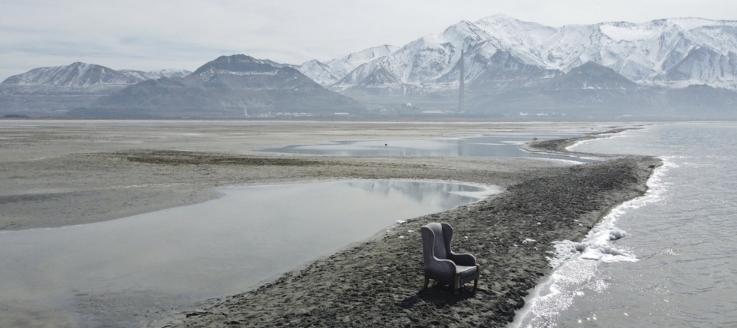In the midst of a severe drought, water levels at Utah’s famous Great Salt Lake have dropped to their lowest level on record. This fell below the previous lowest level of October 2021.
The lake is in a difficult state, says rancher Joel Ferry. It’s the worst drought in 1,200 years. The water level is historically low. It’s likely to hit a new all-time low this summer. “We’re on the Titanic, sailing and trying to avoid the iceberg.”
Since the 1980s, the Great Salt Lake has shrunk by more than two-thirds to just under 1,600 square kilometers today. Where there used to be water, there is now a grey-brown hard-packed surface. Scientist Kevin Perry warns that the drained lake bed is tough. “The lake could become one of the largest sources of dust in North America. The ecosystem is on the brink of collapse.”
Heavy metals washed into the lake
For many years, the mountains of Utah were mined for metals and minerals. The Jordan, Weber and Bear rivers have carried vast amounts of toxic substances such as antimony, copper, zirconium and other heavy metals into the Great Salt Lake. Scientists warn that a time bomb is ticking in the Great Salt Lake. John Perry of Utah State University warns that the crust of the former lake bed, which has dried out, will gradually erode and release dangerous substances. “We’re concerned that particles from the bottom of the lake are getting into people’s lungs. That’s even more of our concern because it contains potentially dangerous arsenic.”
A lot of water goes to the agricultural sector
In planted regions, arid Utah resembles a Garden of Eden with Gardening and farming. The precious water for this comes mainly from the three rivers that feed the lake. Almost 80 percent of the water is used in agriculture.
In summer it gets hot in the bone-dry state of Utah, often quite hot. The humidity is low. Without artificial irrigation, in many places little or nothing would grow.
Salt Lake City likes it green
Planted areas, parks and front gardens in the city: Salt Lake City and its citizens love it green. That has consequences.
Utah’s city dwellers use the highest per capita water in the United States, complains Zachary Frankel. He is a director of the Utah Rivers Council. On average, people in Utah use over 300 liters more water per capita and day than, for example, residents of Denver (US state of Colorado), says Frankel. Water consumption is growing rapidly because Salt Lake City, with around 2.5 million inhabitants today, is too continues to grow rapidly. According to Frankel, saving water is not an option for many. “You’ll see water-filled gutters, people using a hose instead of a broom to clean their driveways. They water while it’s raining. It’s all because we have the lowest water prices in the United States.
“Water prices are highly subsidized. Higher water prices in one of the driest states in the United States are no excuse for conserving water.
Reduced precipitation
Water use plays a major role in the drying up of the Great Salt Lake. Even more important are declining and absent precipitation. Depending on the region, the annual average is 20 to 120 cm a year.
Most of the water comes as meltwater from the Wasatch mountain range, which is more than 3000 meters high. But the snowfall is noticeably decreasing, says climatologist Robert Gillies from Utah State University. “Due to the warmer climate, rain falls instead of snow. And due to higher temperatures, the snow melts two to three weeks earlier in spring.”
In the past four years, the amount of snow has fallen to about 80 percent of the average of previous years, says climate researcher Gillies. The reason for this: Less water evaporates from the shrinking lake to form clouds. In the mountains, the moisture then falls as snow.
In addition, due to the higher temperatures in spring, more water evaporates when the snow melts than before. As a result, less meltwater gets into the rivers and ultimately into the lake. The water cycle is like a downward spiral.
What will become of the migratory birds
Less water in the salty lake also means that the salinity increases. Robert Gillies warns that this will have a significant impact on flora and fauna. Because the lake serves as a resting place for around 10 million migratory birds because there is water and food there – especially brine shrimp.
“These shrimp depend on algae. As the sea decreases, the salinity increases. If the salinity exceeds 17 percent, the algae cannot survive, and with it, the brine shrimp will decrease as well.”
Pessimists fear that the critical 17 percent salinity mark could be reached as early as this summer. When the algae die, the shrimp die. The many birds will no longer find enough food. You won’t find anything better or different than the Great Salt Lake within hundreds of miles.

